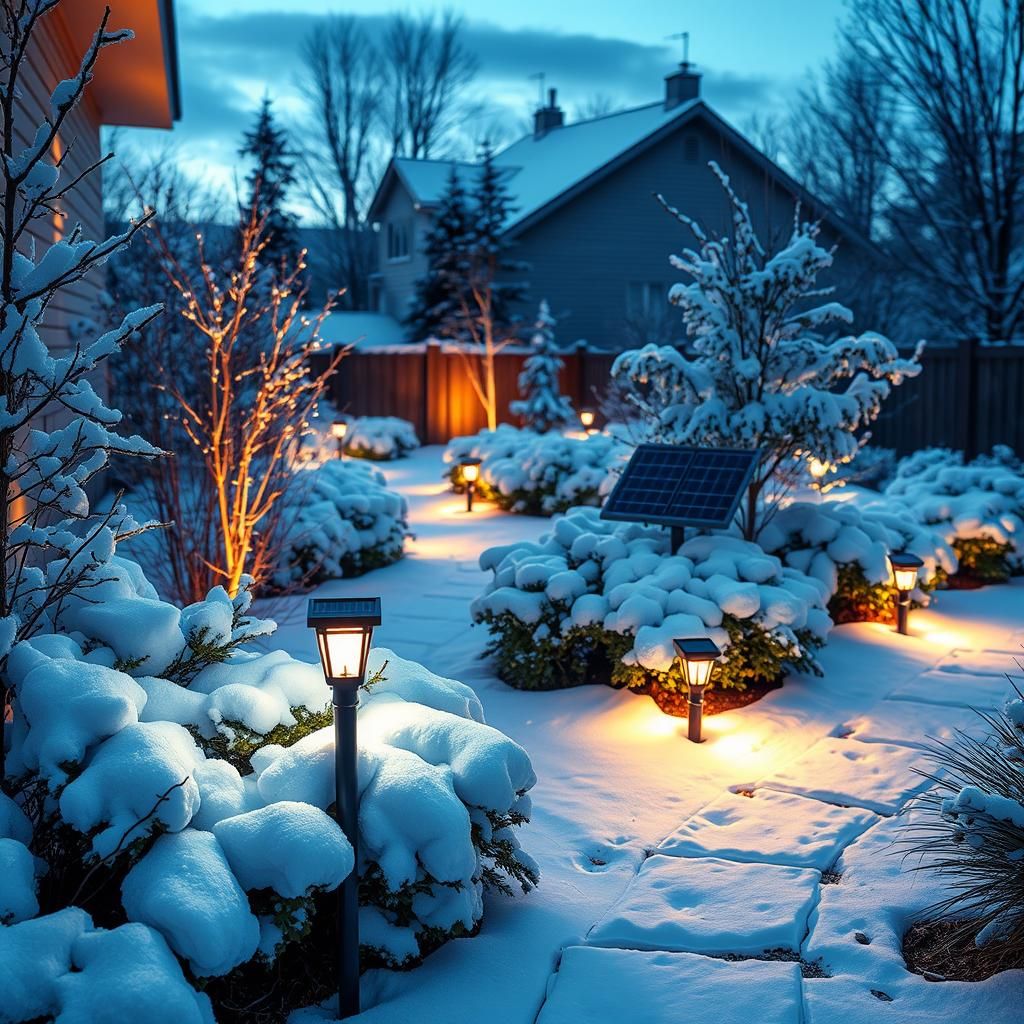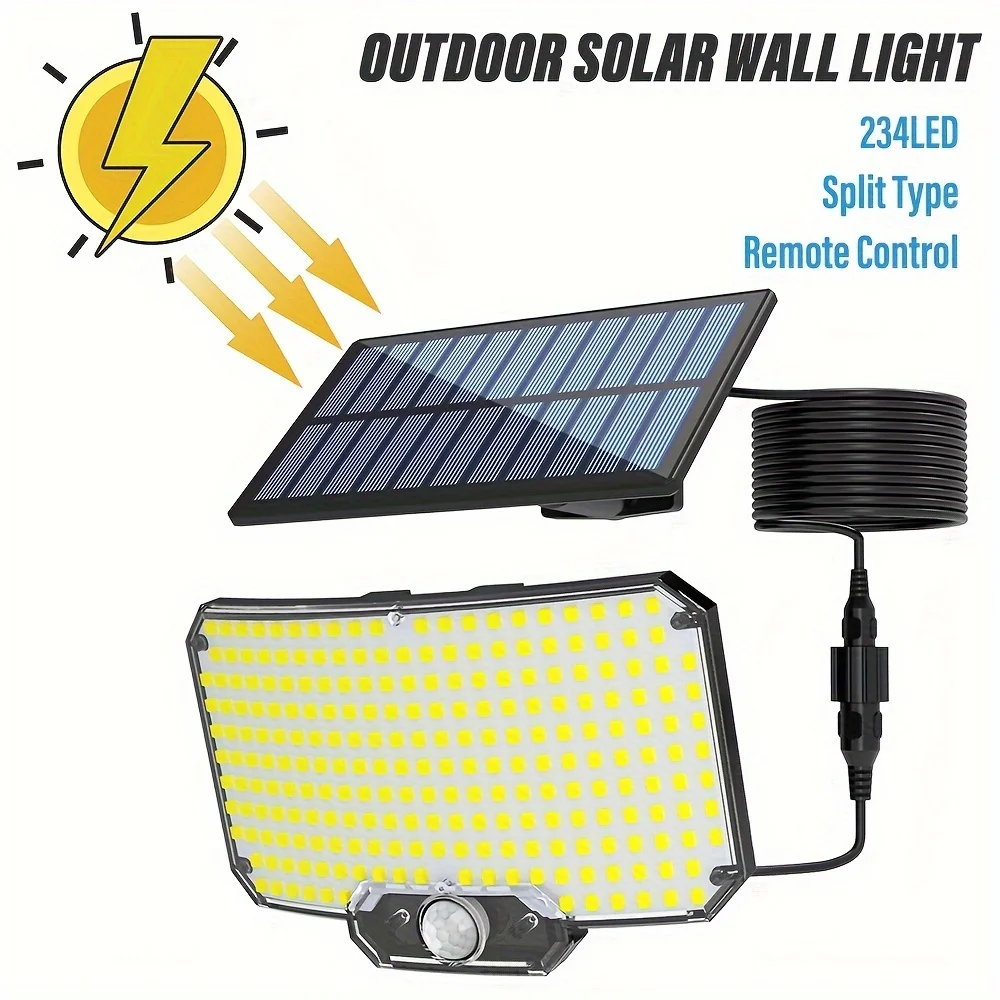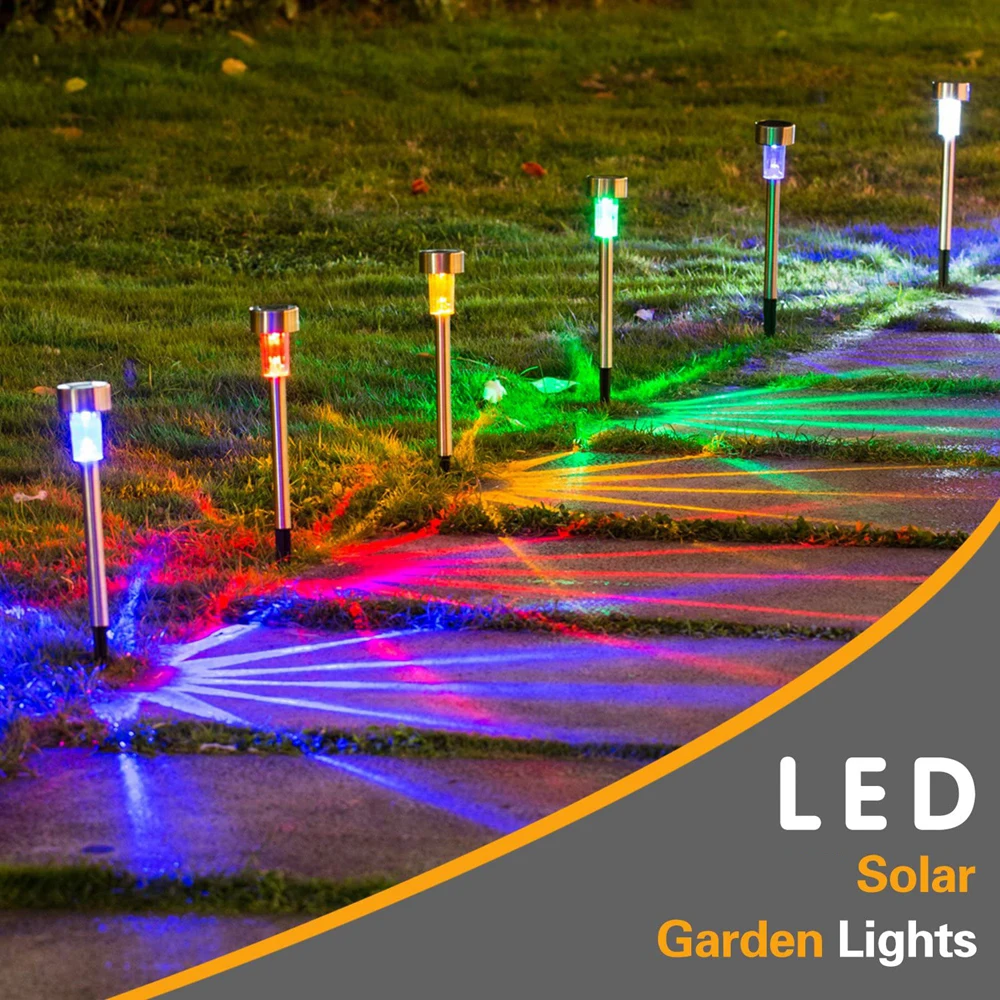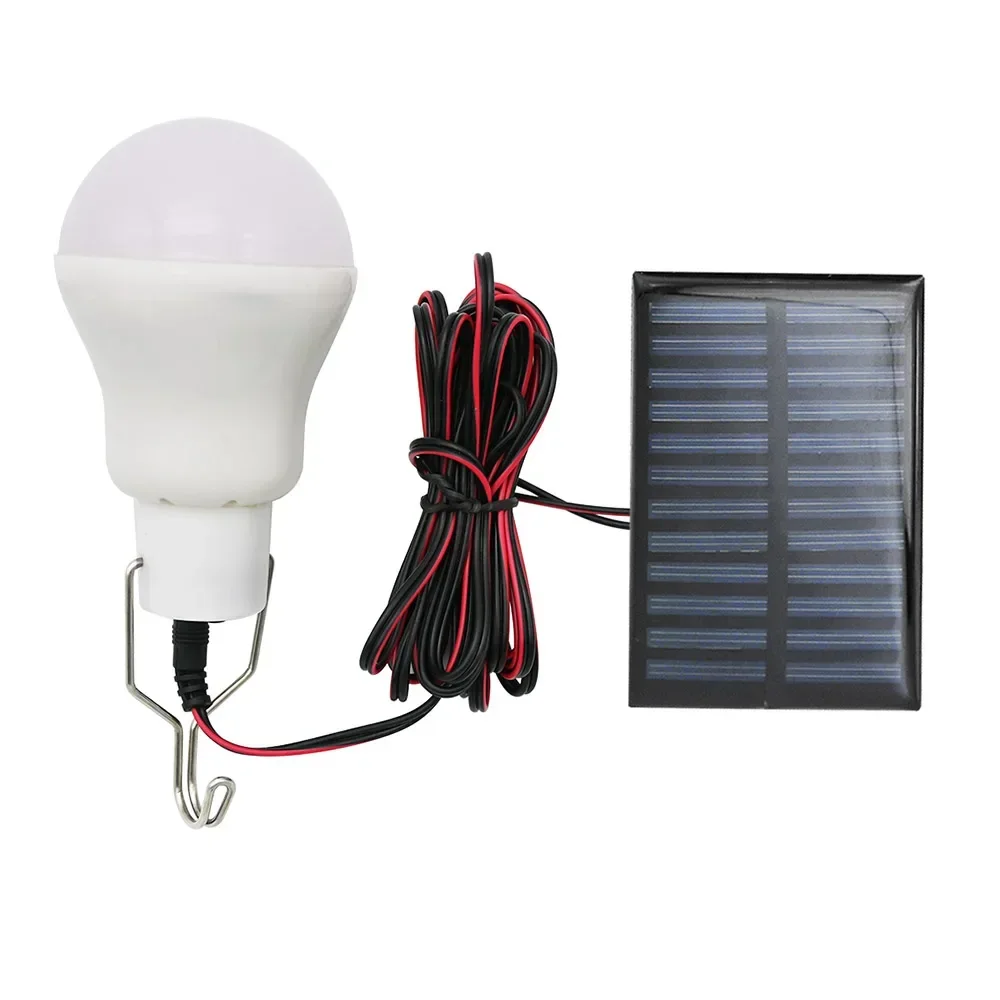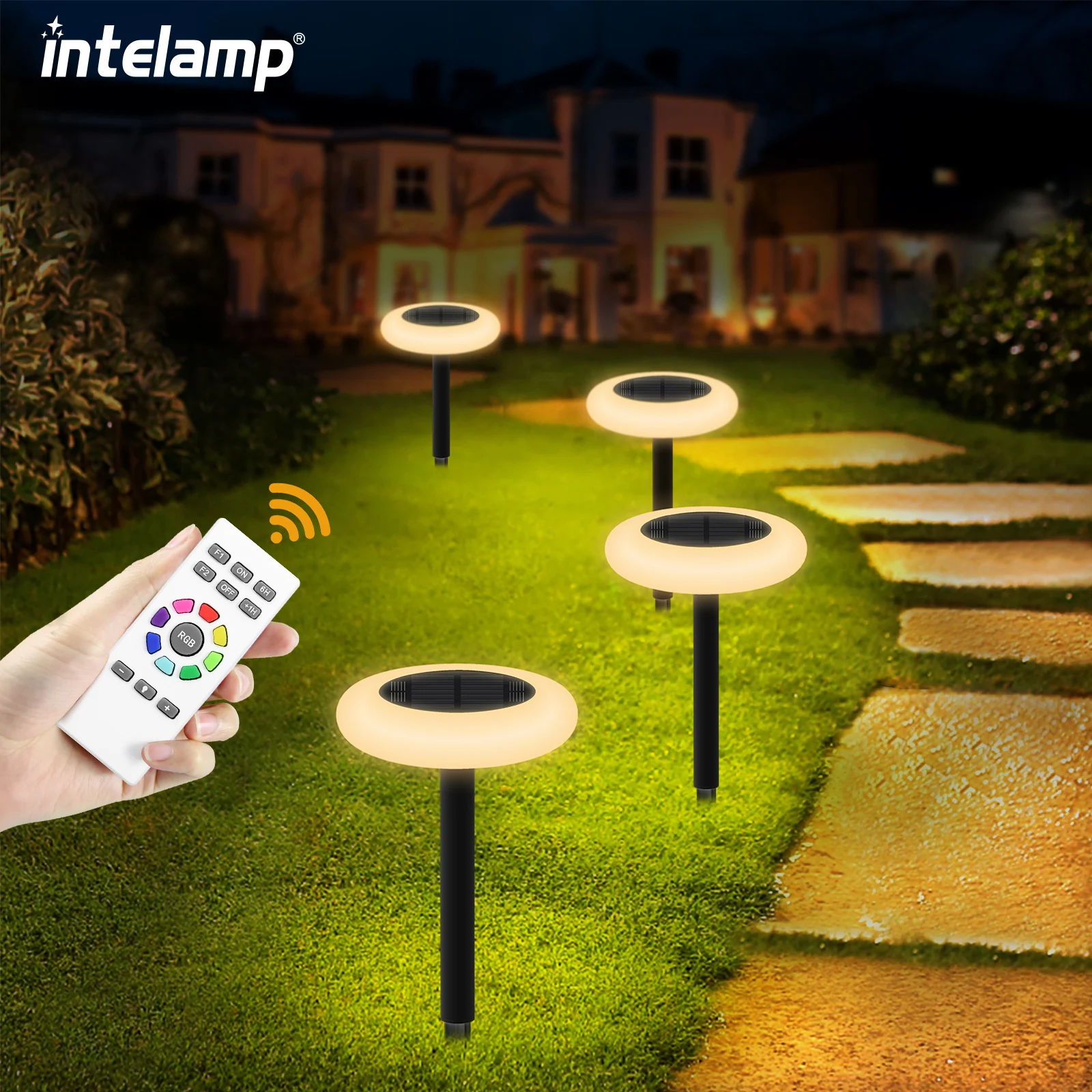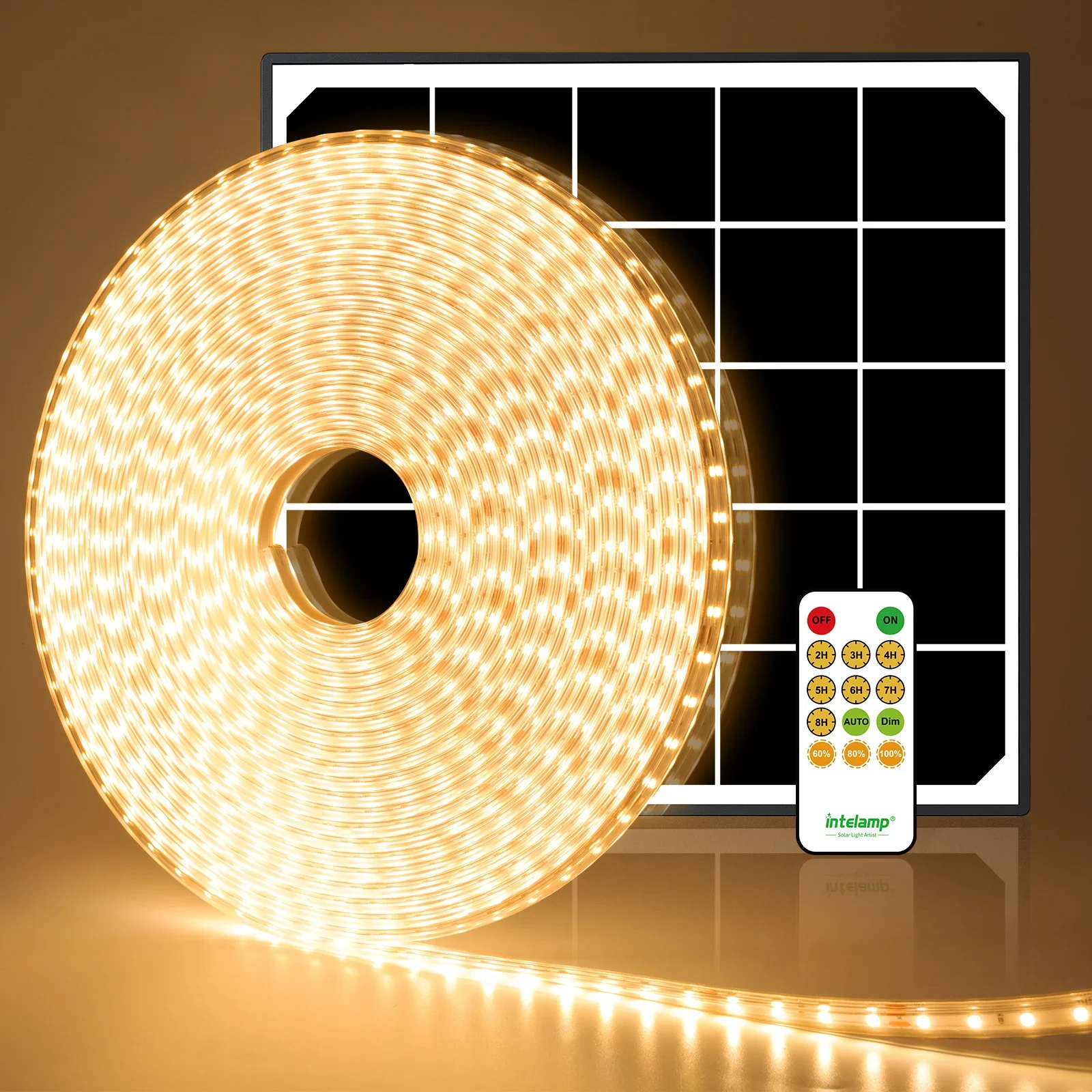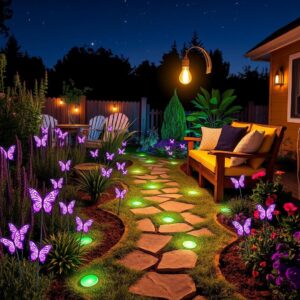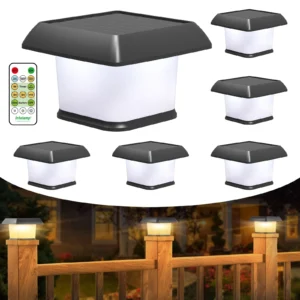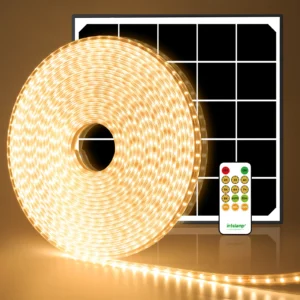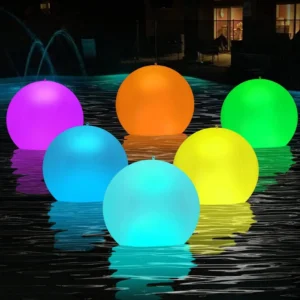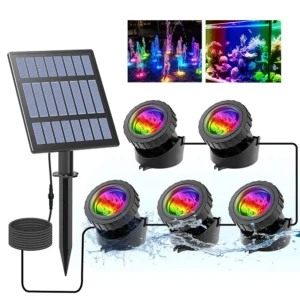234 LEDs Solar Wall Lights with Remote Control – 3 Modes, IP65
Understanding Solar Light Performance in Winter
Winter can feel like a test for solar lights, but here’s the deal: they do work, even when the days grow shorter and the skies turn gray. Solar lights rely on sunlight to charge their batteries, and while winter brings fewer daylight hours and often overcast conditions, they still soak up enough sun to shine after dark—just not as brightly or as long as during summer.
One curious fact is that cold temperatures actually help solar panels perform better. The panels themselves become more efficient in colder weather, quietly collecting solar energy more effectively than on hot days. However, the catch lies in the batteries. While the panels hum along, cold can slow down battery charging and reduce their capacity, meaning the stored energy won’t last as long or power the lights as strongly overnight.
Snow is the biggest winter challenge. Imagine your solar panel under a thick white blanket—no sunlight gets through. This cutoff sends the lights into a sleepy pause until the snow melts or is brushed off. Regularly clearing snow from your solar panels is like giving your lights a fresh shot of sunshine. Besides snow, the usual winter suspects—clouds, fog, and shorter daylight—reduce how much energy the panels can grab.
Still, even on gloomy or chilly days, modern solar lights are designed to make the most of whatever sunlight they capture. They gather energy whenever the sun peeks out, saving it up to cast a gentle glow after dusk. So, while winter pushes solar lights to work a bit harder and sometimes dimmer, they certainly don’t throw in the towel. They keep shining, quietly powered by the day’s brief, bright moments.
Halloween Skull Wind Chime with 6 Color Changing LED Lights
Debunking Common Solar Myths for Winter Use
Myth: Solar Lights Don’t Work in Winter
There’s a stubborn myth floating around that solar lights just throw in the towel once winter hits. The truth? Modern solar lights keep on shining through those frosty months. Thanks to leaps in technology, today’s solar lights are built to handle cold, dim conditions better than ever before. They don’t rely solely on scorching sun rays; instead, they draw power from whatever daylight they can soak up, even if it’s weak or indirect.
Experts in renewable energy routinely bust this myth. Solar cells, especially the monocrystalline types, actually perform more efficiently in cold weather because heat can reduce their effectiveness. While the sun’s hours are shorter and the light less intense, a well-designed solar system still gathers enough energy to light your garden or pathway on chilly winter nights. So no, when the snow flies and the temperature drops, your solar lights aren’t secretly sulking in the shadows—they’re quietly charging up for another evening’s glow.
Other Common Misconceptions
Beyond doubting solar lighting’s wintertime mojo, a few other misunderstandings sneak around. One is that solar panels completely lose their ability to function once frost or snow arrives. This isn’t true either. Solar panels can collect sunlight even on overcast, gray days, just not as efficiently. They’re like unpaid but reliable workers who show up trudging despite the gloom.
Another misconception is that solar lights can’t provide sufficient brightness when it’s cold. While it’s fair to expect slightly dimmer performance compared to summer’s peak sun, the difference isn’t drastic. If your solar lights are noticeably weak during winter, it’s often a maintenance issue—snow-covered panels or expired batteries—not the technology itself failing. When cared for properly, solar lights keep casting their warm, inviting glow well past the first frost.
So the bottom line? Don’t let winter blues cloud your judgment about solar lights. With today’s gear and a bit of care, these lights bring charming ambiance through the darkest months, turning your outdoor space into a cozy, sun-fueled refuge.
2 pcs Solar LED Ground Lamp – Easy Install, Durable, Warm Light
Importance of Solar Panel Maintenance in Winter
Winter’s chill doesn’t just bring shorter days and icy winds—it also means extra care for your solar lights if you want them to keep shining bright. Think of solar panels like your garden’s sun catchers; they need to be clear and well positioned to soak up every precious ray. Snow, dirt, and debris are the enemy here, quietly smothering your solar panels and dimming their glow.
First things first: regularly sweep off snow and wipe away grime with a soft brush or cloth. Skip the harsh scrapers or stiff brushes that could scratch those delicate solar cells. Imagine your panels as fragile lanterns, needing gentle care to maintain their magic. Snow cover isn’t just a mild inconvenience—it’s a blackout curtain for your solar setup. Even a thin layer can block sunlight, drastically reducing energy absorption. Clearing snow off at the earliest opportunity ensures that your solar lights can gulp down sunshine and store up enough power for the dark hours ahead.
But it’s not just about cleanliness. Positioning is key. Winter sunlight arrives at a low angle, so tilt your solar panels around 45 degrees facing true south if you’re in the Northern Hemisphere. This angle captures the weakest winter sun like a magnet, making every ray count. Watch out for shadows cast by trees, walls, or garden structures—these can sabotage your solar feast. Even a small patch of shade can starve your panels, turning twilight into total darkness by nightfall.
Taking these simple steps—clearing snow and debris, using gentle tools, and angling panels to greet midday sun—keeps your solar lights humming through winter’s gloom. It’s about working with the season instead of against it, letting you enjoy warm, eco-friendly light even when the day feels too short and gray. So, roll up your sleeves and give those panels a bit of TLC; your garden’s winter glow depends on it.
4/6/10 PCs Set | Color Changing Solar Garden Stake Lights for Pathway Fence and Patio
Winter Solar Lighting Tips for Homeowners
When the chill of winter settles in, you might wonder if your trusty solar lights can keep up the glow through the cold, darker days. The good news? With a few practical tweaks, your solar setup can shine steadily all season long. Here’s how to get the most from your solar lights when winter’s knocking at your door.
Practical Usage Tips
First things first: placement is everything. In winter, the sun lingers lower in the sky and the daylight window narrows, so be sure to position your solar lights where they can soak up the most sun. South-facing spots, free from shadows cast by buildings or bare trees, work best. This direct sunlight is your light’s lifeblood, charging the batteries for those cozy, glowing evenings.
Snow is both a winter wonder and a solar light’s nemesis. A blanket of white might look serene, but it blocks precious sunlight from reaching your panels. Make it a habit to gently clear snow off your solar lights and panels whenever possible. Use a soft brush or cloth—no harsh scrubbing needed—to avoid scratching delicate surfaces. Think of it as brushing off the light’s winter coat so it can shine bright again.
Durability counts, too. Invest in solar lights built to brave the elements—look for weather-resistant models with at least an IP65 rating. These lights shrug off rain, snow, and sleet like champions, making them perfect for the not-so-summery months ahead.
Battery Care and Cold Weather Considerations
Battery health is crucial, especially in winter’s bite. The cold slows down chemical reactions inside your batteries, reducing how much charge they can hold and how fast they recharge. Choosing solar lights equipped with cold-resistant batteries—often lithium-ion rather than nickel-based—can keep things running longer despite low temps.
If you keep spare rechargeable batteries, store them indoors where it’s warm to preserve their power and lifespan. When temperatures drop sharply, swapping out frigid batteries for warmed spares can be a game changer.
Remember, even the best solar lights will have shorter glow times in winter simply because the sun isn’t as generous with its hours. But with smart positioning, regular clearing of snow and debris, and the right battery care, your garden or pathway can keep twinkling through the frost, turning those long winter nights into moments of quiet enchantment.
Solar Light Bulb Outdoor Solar Powered Light Bulbs Power Bank Camping Light
Best Solar Lights for Winter Conditions
When winter rolls in with its shorter days and chilly nights, not all solar lights are built to keep up. To keep your outdoor spaces softly aglow despite frosty temps and snowy skies, look for specific features that give solar lights the edge against winter’s challenges.
Features to Look For
High-efficiency monocrystalline solar panels
These panels are your best bet for wringing every ray of winter sun. Monocrystalline cells outperform their polycrystalline cousins in low-light conditions, which means they’ll soak up more sunlight even on those gray, overcast days. Their efficiency helps maximize power collection when daylight hours are brief, and every bit of sun matters.
Robust, waterproof, and dustproof designs (IP65+)
Winter can be tough — snow, sleet, and icy rain batter your fixtures. Look for solar lights with a sturdy IP65 rating or higher, guaranteeing they’re well-sealed against water and dust. This keeps the delicate electronics safe and the lights shining reliably through freeze-thaw cycles and storms.
Cold-resistant batteries designed for low temperatures
Battery choice is critical. Many standard rechargeable batteries lose capacity and charge slower as temperatures drop, dimming your lights sooner each night. Cold-resistant lithium-ion batteries or specially engineered NiMH cells keep stamina high when the mercury dips. These batteries endure chilly conditions better and recharge more efficiently, helping your solar setup stay bright longer.
Recommended Products and Technologies
Solar lighting brands have upped their game with options tailor-made for colder climes. Some recommended picks include:
Premium garden stake lights featuring monocrystalline panels and lithium-ion batteries that hold up against frost and snow, perfect for lining pathways or flowerbeds with dependable winter glow.
Solar spotlights with adjustable mounts and IP67 waterproof casings, ideal for illuminating trees or water features that sparkle even under a light dusting of snow.
Lantern-style solar lamps with integrated cold-resistant batteries, adding cozy charm to patios or porches while withstanding low temps and moisture with ease.
By choosing solar lights engineered for winter’s demands, you invite a steady stream of eco-friendly illumination all season long. Your garden becomes a flickering winter haven, glowing with the quiet warmth of solar power even when sunlight feels scarce.
2 Packs Color Solar Lights with Remote Control for Outdoor Decor
Troubleshooting Common Winter Issues with Solar Lights
Winter’s charm often comes with a frosty challenge for your solar lights. If your garden’s glow wanes as the cold sets in, don’t resign yourself just yet. Many wintertime woes have simple fixes that can restore your outdoor sparkle. Let’s break down the common hiccups and how to tackle them head-on.
Reduced Light Duration or Dimming
If your solar lights dim earlier than usual or struggle to shine as brightly, the issue usually starts with sunlight—or the lack of it. Snow and dirt can stealthily cloak the solar panels, creating a barrier that blocks precious rays. Think of your solar panel as a thirsty flower—it needs unobstructed sun to soak up energy. Take a moment to clear snow gently with a soft brush or cloth. Avoid scratching the surface; a tender touch keeps the panels healthy through winter’s trials.
Next, consider the battery inside. Cold temperatures slow down chemical reactions, making battery charging sluggish and draining power faster after dark. If your lights seem lifeless too soon, check if their batteries are cold-resistant or designed for winter use. Regular batteries may falter, so swapping them for ones made to brave the cold can make a world of difference.
Lights Not Turning On
When your solar lights refuse to wake up at dusk, the first culprit is often insufficient sunlight during the day. Winter’s short, often gray afternoons mean your panels may struggle to store enough juice. Verify that your solar panels have a clear, sunny spot, free from shadows cast by trees, buildings, or even snow-laden branches. Even a slight block can starve the panel of vital energy.
Drilling deeper, inspect all wiring and connections for signs of wear or damage. Moisture from melting snow and ice can sneak into tiny crevices, causing corrosion or loose contacts. A careful check can reveal these hidden saboteurs. Tighten any loose fittings and dry off damp areas where possible.
In essence, winterizing your solar lights is less about complex fixes and more about simple, thoughtful care. Keep the panels clean and unshadowed, equip them with hardy batteries, and protect vulnerable wiring. With these tweaks, your garden can still pulse with that warm, solar-powered glow—even under a silver blanket of snow.
Solar Strip Lights Outdoor – 6000mAh 32.8FT LED Lights
Additional Resources and External Links
When diving into the world of solar lighting during the colder months, it helps to have reliable guides and expert insights just a click away. Whether you’re a seasoned solar enthusiast or just exploring how to keep your garden glowing through winter’s chill, the resources below offer practical advice, myth-busting clarity, and thoughtful recommendations to keep your solar lights shining bright.
Do Solar Lights Work in Winter? – Today’s Homeowner
This guide breaks down the basics of winter solar light performance. It’s a straightforward read that cuts through common confusion, reassuring you that, yes, solar lights do work in the cold, even when daylight is trimmed short.Maximizing Solar Light Efficiency in Winter – Enkonn Solar
For those seeking practical efficiency tips, this resource offers down-to-earth advice on placement, maintenance, and what to expect from your solar setup as temperatures drop.Snow and Solar Panels Explained – EcoFlow Blog
Snow can be a tricky foe for solar panels. This article explains why snow matters so much and shares simple strategies to keep your solar panels clear and effective all winter long.Winter Solar Light Advice – Ideal Home
Ideal Home shines a light on choosing the right solar products and placement tips, making the enchantment of a glowing garden just as reachable in winter as summer.Solar Myths Debunked – Fonroche Solar Lighting
Bust those persistent myths! This site tackles misconceptions head-on with clear facts, helping you trust your solar lights’ performance no matter the season.Best Solar Lights for Winter Conditions – WaySaving
Hunting for the best gear to battle winter’s dim days? WaySaving offers curated selections and features to look for when shopping for winter-ready solar lights.Solar Light Performance on Cloudy and Winter Days – Solar Eye
Cloudy skies and short days don’t have to mean a dark garden. Solar Eye shares insights into how solar light systems adapt, helping you set realistic expectations and maximize your system’s magic.
Thinking of winter solar lighting as a partnership with nature rather than a battle helps set the tone for success. With these resources at your fingertips, your garden can glow as warmly and invitingly on the frostiest nights as it does under the summer sun. Keep them handy for ongoing inspiration and trusted advice through every season.

